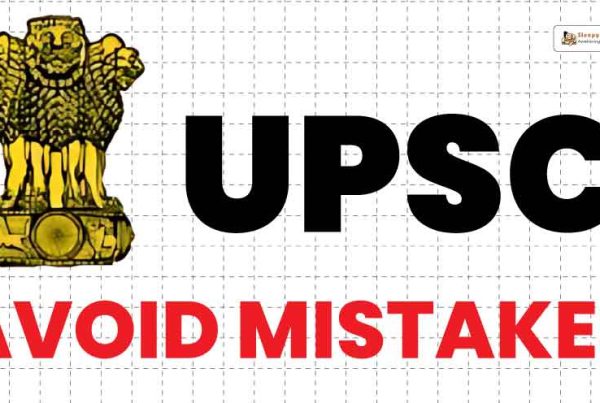Algebra often evokes mixed feelings among CSAT aspirants. For some, it’s a straightforward application of rules, while for others, it’s a maze of equations and variables. No matter how you feel about it right now, one thing is certain—there’s no escaping algebra if you’re preparing for the Civil Services Aptitude Test (CSAT) for the UPSC Prelims.
But here’s the good news. Mastering algebra is not as difficult as it seems. With the right approach and consistent practice, you can turn it into a strength for your CSAT preparation. In this guide, you’ll learn why algebra is crucial, which topics to focus on, and tips to sharpen your algebraic skills for CSAT success.
Test your CSAT Preparation with our FREE MOCK TEST!!
Why Algebra Matters for CSAT
Algebra plays a significant role in the CSAT’s numeracy and mathematical ability section. Why? Because it assesses two key skills that are essential for civil services aspirants:
- Problem-Solving Abilities
Algebraic questions challenge you to untangle complex problems step by step. Whether it’s simplifying an expression or solving equations, the process refines your critical thinking and logical reasoning.
- Logical Reasoning
Algebra isn’t just about numbers and symbols—it’s about patterns, relationships, and logic. The concepts and techniques you master in algebra will train your mind to find efficient solutions, a skill that’s invaluable in administrative roles.
Beyond this, algebraic concepts are integrated into question types like simplifications, equations, and data interpretation, all of which are exam staples.
Key Algebraic Topics for CSAT
The algebra portion of the CSAT exam is centered on a few core topics that you’ll need to thoroughly understand and master to perform well. Let’s break them down in detail:
- Algebraic Identities
Algebraic identities form the foundation of algebra and are essential for simplifying and solving problems quickly. Common identities like \((a+b)^2 = a^2 + 2ab + b^2\), \((a-b)^2 = a^2 – 2ab + b^2\), and \(a^2 – b^2 = (a+b)(a-b)\) repeatedly appear in various problems. Mastering these identities not only helps you solve equations faster but also aids in reducing errors during calculations. These are crucial for expanding, factoring, and simplifying expressions efficiently.
- Linear Equations
Linear equations are fundamental in testing your ability to represent and solve real-world problems mathematically. You’ll encounter questions involving equations in one variable, such as \(ax + b = 0\), where the solution is straightforward, as well as simultaneous equations in two variables. Simultaneous equations, often presented as a pair of equations like \(ax + by = c\) and \(dx + ey = f\), require strategies like substitution or elimination to solve. They are an excellent way to assess your problem-solving skills and logical reasoning.
- Quadratic Equations
Quadratic equations delve deeper into algebra and test your understanding of nonlinear relationships. These equations, typically in the form \(ax^2 + bx + c = 0\), can be solved using a variety of methods, including factoring, completing the square, or applying the quadratic formula \(\frac{-b \pm \sqrt{b^2 – 4ac}}{2a}\). Learning to identify the structure of quadratics and analyze their solutions helps you tackle more complex problems in the exam. Understanding the roots and their nature (real, equal, or imaginary) through the discriminant \(b^2 – 4ac\) is particularly important.
- Simplification of Expressions
Simplification problems test your ability to manipulate and reorganize algebraic terms efficiently. You’ll encounter tasks like grouping similar terms, simplifying complex fractions, and reducing expressions by canceling out factors or substituting values. These problems assess your precision and fluency in handling algebraic operations, which are critical for solving broader mathematical questions with accuracy and speed.
By focusing on these four key areas, you’ll build a strong foundation for the algebra questions in the CSAT exam. Mastery of these concepts will not only help you solve problems effectively but also give you the confidence to handle the broader quantitative sections of the test.
Building a Strong Foundation
You can’t build a well-rounded understanding of algebra without a solid foundation. That’s why NCERT Mathematics textbooks for Classes 8th, 9th, and 10th are your best friends. These books guide you through the basics and offer plenty of practice exercises for every concept.
Instead of treating these books as just a collection of formulas, take time to understand the reasoning behind each one. For example, don’t just memorize \((a+b)^2 = a^2 + 2ab + b^2\). Understand why it works. Conceptual clarity will help you solve seemingly tricky problems with confidence.
Pro tip: Try teaching the concepts to someone else. If you can explain it clearly, you’ve mastered it.
Effective Practice Strategies
When it comes to algebra, practice is your best teacher. Here are a few effective strategies to up your game:
- Work on a Variety of Problems
Don’t restrict your practice to just one type of algebra problem. The CSAT often includes a mix of topics such as linear equations, quadratic equations, simplifications, inequalities, and word problems. Practicing a diverse range of questions will help you build a strong foundation and prepare you for the unpredictable nature of the exam. Use textbooks, online resources, or coaching materials to ensure you’re covering all possible problem types.
- Solve Previous Years’ Questions
To understand the CSAT paper pattern and difficulty level, practice problems from past exams. This will help you identify common topics and question formats while giving you a realistic sense of what to expect. Time yourself when solving these questions to build speed and accuracy, and review your mistakes carefully to learn from them. This targeted preparation will make you more confident on exam day.
- Focus on Consistency Over Intensity
Regular practice is far more effective than occasional bursts of intense study. Instead of cramming all your preparation into a single day, aim to practice algebra consistently for short, focused periods. For example, dedicate 20 to 30 minutes each day to solving problems. This steady approach not only improves retention but also builds a habit of problem-solving, which is crucial for long-term success.
Mastering Algebraic Identities
Algebraic identities are time-savers and problem-solvers in the CSAT. Make sure you’re comfortable with these essential formulas:
- \((a+b)^2 = a^2 + 2ab + b^2\)
- \((a-b)^2 = a^2 – 2ab + b^2\)
- \(a^2 – b^2 = (a+b)(a-b)\)
- \((x+y+z)^2 = x^2 + y^2 + z^2 + 2xy + 2yz + 2zx\)
Start by understanding what each identity means. Then solve problems that require applying these identities to simplify complex expressions. Once you’re confident, try solving problems backward—start with the simplified expression and derive the original form.
Solving Equations Quickly
Speed is essential in CSAT, so learning shortcuts and efficient techniques can make a big difference. Here are two tips for solving equations:
1. Linear Equations
For single-variable problems, isolate the variable on one side. For simultaneous equations, use substitution or elimination methods. For example:
- Solve \(2x + y = 7\) and \(x – y = 1\) simultaneously by adding or subtracting the equations to eliminate one variable.
2. Quadratic Equations
Factorization is the fastest way to solve quadratics when applicable. If factoring isn’t straightforward, use the quadratic formula:
\[
x = \frac{-b \pm \sqrt{b^2 – 4ac}}{2a}.
\]
Memorize this formula and practice it until it feels automated. Pro tip: Use approximation techniques when the numbers are complex but the exam allows rounding.
Here’s an example to illustrate step-by-step:
Solve \(x^2 – 5x + 6 = 0\).
- Rearrange the equation into the standard form.
- Factor it into \((x-2)(x-3)=0\).
- Solve for \(x = 2\) and \(x=3\).
Focus + Practice = CSAT Success!
Algebra is no longer a hurdle when you approach it with the right mindset and tools. By mastering key topics, practicing diligently, and using efficient solving techniques, you’ll not only tackle this section but excel in it.
Your preparation isn’t just about CSAT—it’s a way to develop problem-solving and logical reasoning skills that will serve you long after the exam. Need a boost? Explore additional resources or connect with online communities for peer support and expert guidance.
Your opportunity for success starts today. Open that NCERT book, and get to work. The equations are waiting!






